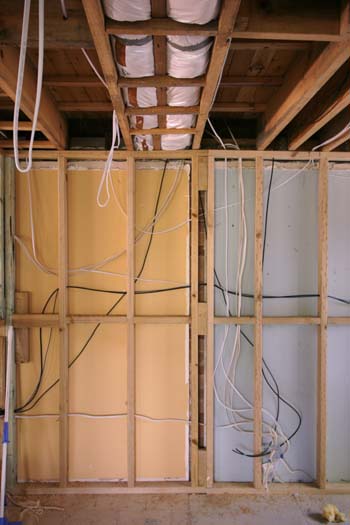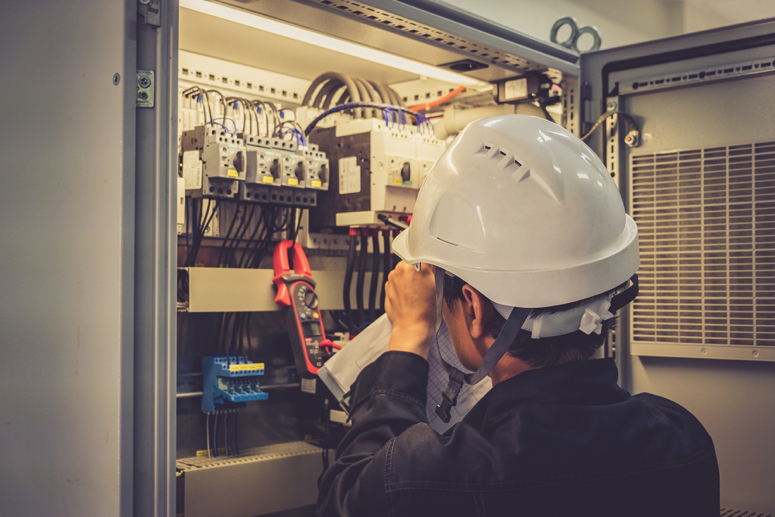Advanced BRE Automation Australia: Transforming Your Automation Needs
The Ultimate Overview to Electric Setup: Tips and Strategies for a Safe and Efficient Home Wiring System
In the world of home upkeep, couple of elements are as vital yet typically neglected as the electrical wiring system. By discovering the subtleties of electrical security procedures and energy-saving methods, this comprehensive overview will shed light on the intricacies of home electrical wiring, equipping people to take charge of their family's electric facilities.
Recognizing Electrical Precaution
To guarantee the security of both individuals and residential property, understanding and implementing proper electric security actions is critical in any kind of home electrical wiring task. Electrical power is a powerful force that can be dangerous otherwise managed with caution. Among the fundamental safety steps is guaranteeing that all electrical work is done by qualified specialists that follow neighborhood structure codes and guidelines. It is important to carry out a complete evaluation of the electric system prior to starting any kind of circuitry job to identify potential hazards or problems that require to be addressed.
In addition, utilizing the appropriate tools and tools is crucial for keeping safety and security during electric setups. Shielded handwear covers, voltage testers, and protective glasses are a few of the standard security equipment that should be worn to avoid electrical shocks or mishaps. It is likewise essential to de-energize circuits prior to servicing them and to classify all circuits and breakers plainly to stay clear of confusion.

Vital Devices for Home Electrical Wiring
Making certain the appropriate execution of electric safety measures in home wiring jobs includes utilizing a details collection of important tools developed to assist in the setup process effectively and securely. Some of the key tools required for home circuitry jobs include a voltage tester for inspecting real-time cords, cord pole dancers for getting rid of insulation from wires, a cable cutter for precisely cutting wires to size, a screwdriver set for protecting electrical elements, electrical tape for insulation and safeguarding connections, a wire ripper for stripping cable sheathing, and a multimeter for gauging voltage, existing, and resistance.
Step-by-Step Electrical Setup Overview
Starting an electrical installment task requires precise planning and adherence to safety and security guidelines. Prior to beginning any work, guarantee you have an in-depth plan detailing the format of the electrical system, including the positioning of outlets, switches, and components. Consider the power demands of each device to establish the appropriate cord scale and circuit breaker dimensions.
The initial action in the installment process is to turn off the power supply to the area where you will certainly be working. Utilize a voltage tester to validate that the circuits are de-energized prior to touching any type of cables. Next, thoroughly remove existing fixtures or outlets and detach the cables.
When setting up brand-new electrical wiring, run cable televisions with walls and ceilings, safeguarding them in area with appropriate fittings. Follow local building ordinance and maker directions for proper cord setup and links. BRE Automation Australia. Ensure to identify wires for easy identification and future upkeep

Troubleshooting Common Wiring Issues
Having actually finished the setup process as outlined in the previous subtopic, click to find out more troubleshooting typical circuitry problems is an important skill for making sure the safety and security and performance of your electrical system. One typical problem is a tripped breaker, look here commonly triggered by overloaded circuits or a short circuit. To troubleshoot this, locate the breaker panel, recognize the tripped breaker by trying to find the one not fully in the "on" position, and reset it by turning it totally to "off" and then back to "on." One more widespread trouble is a faulty outlet, identified by no power or recurring power supply. Make sure the electrical outlet is not regulated by a button, after that make use of a voltage tester to examine for power. If there is no power, switch off the circuit, inspect the electrical wiring connections for any kind of loosened or damaged cords, and change the outlet if essential. Continually flickering lights can suggest loosened electrical wiring connections or an overloaded circuit. To resolve this, check and tighten up all cord connections in the impacted components and switches and redistribute the tons on the circuit to balance the electric need. On a regular basis inspecting and without delay resolving these typical circuitry issues will maintain the safety and security and efficiency of your home electric system.
Tips for Energy-saving Electrical Solutions
For optimum energy efficiency in electrical systems, executing wise methods and utilizing energy-saving modern technologies is extremely important. One vital tip for achieving an energy-efficient electrical system is to upgrade to LED lights. Appropriate insulation and sealing of home windows, doors, and electrical outlets can also protect against energy loss, eventually reducing the work on electric systems.
Final Thought
In verdict, executing proper safety measures, using important devices, complying with a step-by-step installation guide, troubleshooting common concerns, and incorporating energy-efficient directory pointers are important for a risk-free and efficient home circuitry system. By adhering to these techniques, homeowners can guarantee the durability and performance of their electric setups. It is very important to prioritize security and efficiency when it involves electrical job in order to avoid possible risks and to preserve a reliable electric system in the home.